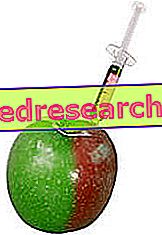
Formic acid is a naturally occurring compound in both plants and some animals. It was identified for the first time in the red ant ( Formica rufa Linnaeus, 1758), an insect capable of emitting powerful jets of formic acid even at a distance of 30 centimeters; it is from this characteristic that the term "formic acid" originates.
In vegetables, formic acid is found in free or esterified form: it is usually contained in pine needles, in lavender and bergamot essences, in grapes, tamarind and nettle hair.
It is used, in small doses, to accelerate aerobic respiration and fermentation of bread yeasts.
Formic acid, being a strong and corrosive acid, has a certain level of toxicity; its vapors are irritating to the eyes and to the mucous membranes of the respiratory tract. Even in a diluted form, formic acid always remains irritating, giving possible inflammation of the mouth and skin burns.
| E200 | E201 | E202 | E203 | E210 | E211 | E212 | E213 |
| E214-E2119 | E220 | E221 | E222 | E223 | E224 | E225 | E226 |
| E227 | E228 | E230 | 231 | E232 | E233 | E234 | E235 |
| E236 | E237 | E238 | E239 | E240 | E242 | E249 | E250 |
| E251 | E252 | E260 | E261 | E262 | E263 | E270 | E280 |
| E284 | E285 | E290 | E296 | E297 |




